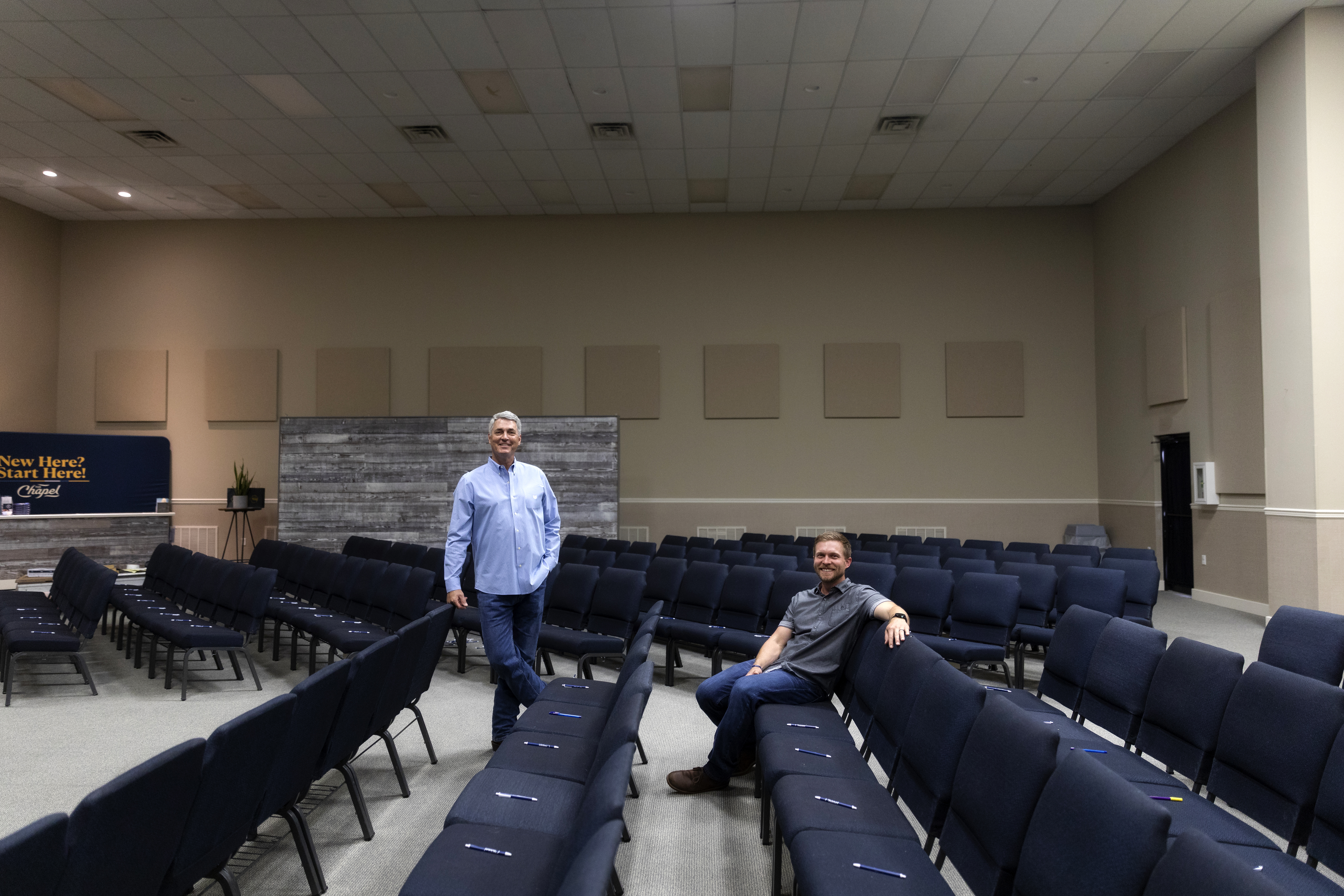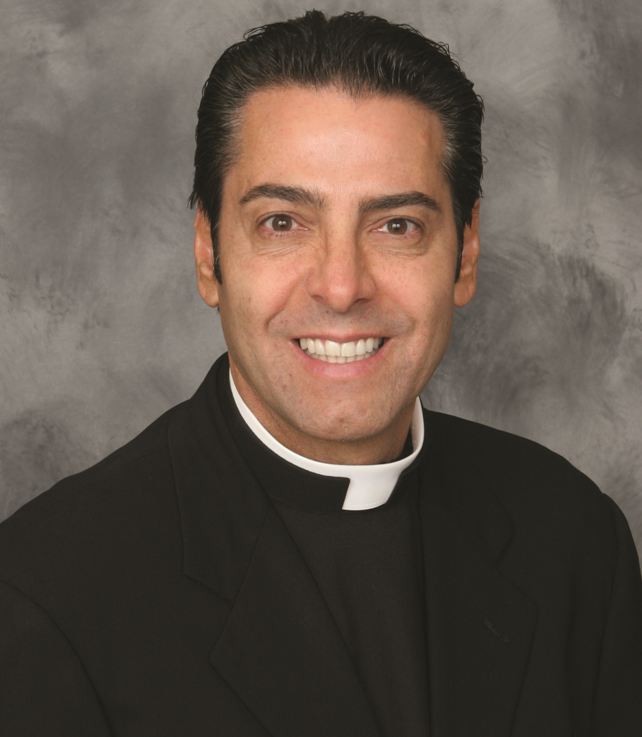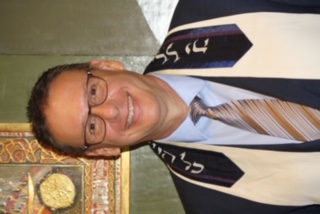
Church leaders troubleshoot virtual gatherings during the pandemic
“Love thy neighbor” becomes a little harder to do when you can’t even visit your neighbor.
That’s been the struggle of Baton Rouge’s religious community during the coronavirus outbreak, when gatherings of 10 or more were forbidden. And now as shutdown rules are slowly lifted, houses of worship are faced with a new normal of health guidelines to follow, restrictions on church capacity and a congregation that may not be ready to join together just yet—instead opting to worship through a screen for the foreseeable future.
Churches, temples and assembly centers across the Capital Region started canceling regular services from late March to mid-May—a season with special holy significance for many. Spiritual leaders had a tough decision: Forego interactions with their congregations entirely, or find a way to still share their message online.
|
|
For churches with a younger demographic of worshipers and more experience with social media, the transition to virtual services was somewhat smooth. But it may not have felt natural at first—even for those with top-line video equipment.
“We’re speaking to a camera with lights in our eyes. It’s taken a while to find the person in the lens and feel like you’re talking to them directly,” says The Chapel’s senior pastor Kevin McKee.
Even before the stay-at-home order, The Chapel and similar nondenominational Christian churches were experimenting with Facebook Live events and videotaped services. They also had a built-in audience of young people ready to use online platforms like Zoom.
For more traditional places of worship, the learning curve might have been longer. There are older parishioners who don’t have social media accounts or access to the internet, and church leaders had to navigate technology they hadn’t used regularly.
“As a priest, you prepare your whole life to celebrate mass and the sacraments, and now that’s on hold,” says Father Cleo Milano of Our Lady of Mercy Catholic Church. “At the end of the day there’s never a substitute for bringing together people in a church for worship.”
And much like the business community has had to “adapt or die” in the digital age, the Capital City’s religious institutions needed to embrace this new normal—or risk losing the connection to their followers.
THE DIGITAL REACH

Rabbi Jordan Goldson of Congregation B’Nai Israel had held a few meetings over Zoom before. And last winter, he taught a Jewish spirituality class using the video conferencing platform. But when he organized the synagogue’s first Shabbat services on Zoom in mid-March, he wasn’t sure what to expect.
The services are typically held every Friday night, and Goldson admits they often only attract around 20 attendees because of competing cultural and athletic events around town.
But that first Friday night, he saw around 40 “squares” pop up on his screen—indicating at least 40 households that decided to join in for prayer. Since then, Zoom has become a temporary replacement for regular Shabbat services.
“We’re having larger numbers, and I see people who I wouldn’t normally see otherwise,” Goldson says. “We all visit before the service; we visit after. People seem to be getting a lot out of it.”
Goldson and members of the synagogue’s board began calling the roughly 200 congregants to check up and make sure they were able to connect virtually during the stay-at-home order. He has even used Zoom to tutor young people preparing for their bar mitzvahs.
“I think if we’re missing people, it’s a small number of people,” Goldson says. “Most people have access. And if they don’t, we’ve offered assistance.”
For The Chapel, which first began on LSU’s campus before adding a second location on Siegen Lane, its leaders say their “one church, two locations” mantra took on a new meaning as they transitioned to joint live streams featuring pastors from both assemblies.
Pastor McKee says they had already been updating facilities to accommodate video—adding lighting and purchasing video equipment while also improving the church’s website.
Throughout the stay-at-home order, its Sunday services were recorded at the empty church. The pastors delivered their same conversational vibe with a skeleton crew of camera operators and a live band.
The Chapel’s staff also started calling through the database of congregants to make sure they could access the online content.
The end production looks as professional as anything you might see on a televised worship service, minus the audience. And The Chapel’s leaders say they hope it helps broaden their reach online.
“We’re definitely seeing it as opening the front door for new people, even though we know some of them won’t ever be able to even come through that door in real life,” says Siegen site pastor Andrew Bates. “The megaphone has gotten so much louder.”

“It’s creating a great hunger to return to the church, and a hunger from the priest to be reunited with his flock.”
Our Lady of Mercy’s Father Cleo Milano
At Our Lady of Mercy, Father Milano and his staff have been delivering Sunday services online as well as through WBRZ on Channel 2. He’s posted regular video messages and prayers from the sanctuary on the church’s website and social media while other church officials have created a Zoom prayer series and educational videos.
The physical church can fit 800 worshipers, so the variety of resources and content the church has put online aims to cast as wide a net as possible. And all these videos give the sense of a typical Catholic mass, with Milano in his traditional robes going through the rituals of the service.
“Obviously these have been some very unusual days for everyone,” Milano says. “But it’s also been a gamechanger with how people can plug in online. We’ve been trying to be creative and trying to reach out in every way we can.”
A MESSAGE FOR NOW
The unknowns of the coronavirus pandemic have put added stress and anxiety on people.
Pastors McKee and Bates at The Chapel say they didn’t want to shy away from that topic when offering spiritual guidance. Bates developed an ongoing series called “Anxious for Nothing,” which he weaves into the Sunday services. The Chapel also provides online resources for mental health counseling and ways to deal with anxiety and depression.
His message is that it’s “OK to not be OK.”
“We’re constantly riding the rhythm of: Here’s the problem that many of us are dealing with; now here’s a step toward the solution,” Bates says. “We’re sharing our own personal stories of how we’re dealing with this and sharing from scripture.”
And while COVID-19 seems to find its way into every conversation or news article, McKee acknowledges people need a breather sometimes.
“People don’t always remember what pastors say week to week. There’s a bit of redundancy there sometimes,” he says. “But right now, you can’t stay at that serious level all the time and ask people to dig deep over and over.”
Rabbi Goldson provides a “kavanah,” or intention at the beginning of each service. Lately, it’s been focused on hope and encouragement to stay strong, reminding his congregation they are in it together.
“If any people has been through these kinds of things throughout history, ours has,” he says. “We’ve survived and found ways to adapt. And so if you know you’ve made it through before, sometimes that gives you hope that you’re going to be able to find a way through this even though it’s not going to be the same on the other end.”
REOPENING THE DOORS
While this issue of 225 was being finalized in early May, Gov. John Bel Edwards announced the next steps toward a Phase 1 reopening of businesses, allowing church assemblies at a reduced occupancy of 25%.
On May 4, the Interfaith Federation of Greater Baton Rouge, which represents nearly 50 congregations, published suggested guidelines. It similarly called for capping church occupancy at 25%, encouraging worshipers to maintain 6 feet of space from those who aren’t part of their households, wearing protective masks and avoiding passing around items like collection baskets or communion vessels.
Religious leaders interviewed for this story all seemed eager to get back to a normal routine. But all of them acknowledged that online services provided an alternative that will likely stick around.
“There’s a lot of conversation in the Jewish community about what we are going to do come our major holidays in September,” Rabbi Goldson says. “If we told everyone we’re having services at the temple tonight, we would do that and we’d be able to livestream our services if people aren’t comfortable coming back to the sanctuary.”

“People don’t have to rush off to an event or a game or something like that right now, so they have more time to talk after prayer. There’s this relaxed energy about having a conversation. People are relating to each other in new ways.”
Congregation B’Nai Israel’s Rabbi Jordan Goldson
Father Milano says Our Lady of Mercy is following the directions of the Catholic diocese of Baton Rouge. Its leadership has indicated they will adhere to the state-ordered occupancy guidelines, which may mean hosting additional masses to accommodate all congregants who want to return to church.
“Mercy is usually alive and filled with people all the time,” Milano says. “It’s creating a great hunger to return to the church; a hunger from the priest to be reunited with his flock. I hope people don’t fall into a trap of thinking that they don’t have to go to church and instead can just watch online at home in their pajamas.”
At The Chapel, pastors seem to be embracing the online world as an extension of its purpose.
“You’ve got a larger community of people experiencing it at the same time,” Pastor McKee says. “The fact that we all know we’re here together, it creates an organic nature that’s been a plus.”
For Goldson, the stay-at-home routine of April and May gave him an insight into the idea of a “reset” many people have talked about during COVID-19.
“What I’ve noticed is that because people don’t have to rush off to an event or a game or something like that, they have more time to talk after prayer,” he says. “There’s this relaxed energy about having a conversation. People are relating to each other in new ways. So I think that the online platform is really the entree to creating these new relationships. And I hope that will only expand once we’re able to come back together.”
This article was originally published in the June 2020 issue of 225 Magazine.
|
|
|

